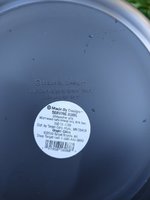I believe you should know what you are going to attempt with a tree before leaving the nursery with it. Some of the following can/should be applied to 3-100 trees before selection. The earlier you begin your artistic process, the sooner you will make progress.
Step one for me, in any season it is purchased, is removal of one or two large branches that definitely won't be used in the design. The heaviest, straightest branch, with the most useless parts.
For me it's this green one.
View attachment 395966
They will never miss this branch, and it opens up the interior to light straight away. Also gives you the necessary view in to continue contemplation.
Then there are 3 things that you should begin putting "values" (xof10) on.
Buds....that yellow circled one seems 10/10.
Segments of taper....each next being a bit shorter and thinner than the previous, seems you can reasonably identify 2 next segments.
Movement.
This is the order of precedence they have for mugo pine as well.
This tree will probably give you about 6 different mixes of these values. 10/3/6, 8/6/4, 3/6/5, etc...
Contemplate each understanding that by next late spring, and for as long as you are slowly (years) cutting it back to this, the values may change, be observant to change plans accordingly. Reevaluate and select the "tree" with the best values.
For what is visible here, that yellow bud is a reasonable first branch, so I would aim to choose a second segment that moves away from it.
Each year, remove the next most useless branch, that is shading or otherwise impeding your "keeper parts", which you will be maintaining with a technique more geared towards refinement. Which is basically just thinning apical buds to 2 as soon as they extend to the point this is possible. This could be spring, fall, or anytime in between.
Note ....
They seem to go through this phase where, the low branches die, then with the interior more lit, buds like that yellow one will begin to grow.
This tree seems right in the middle of that process, which is kind of the worst stage to purchase a tree at. Which really only has to do addressing the fact that we are impatient.
It's easier to work faster with something that is smaller and still compact, or something that is already dead and clean, with more low buds already moving.
IMO, it's more Math than Art, so don't let it elude you.
Math+ Observation=Art
Sorce






 .
.





 .
.


